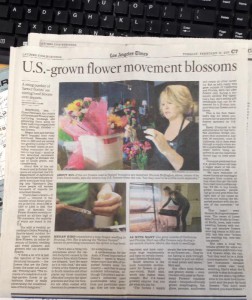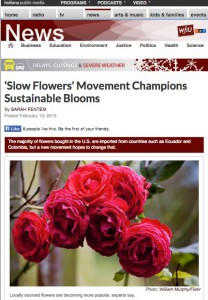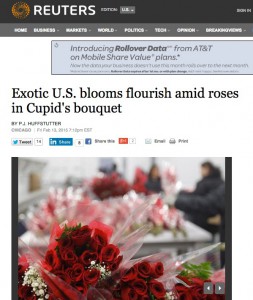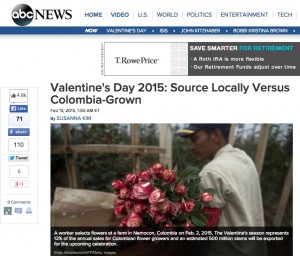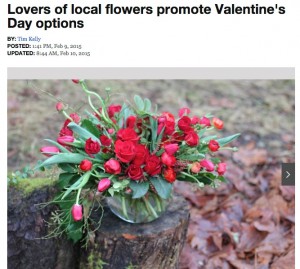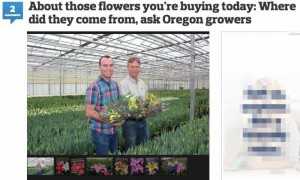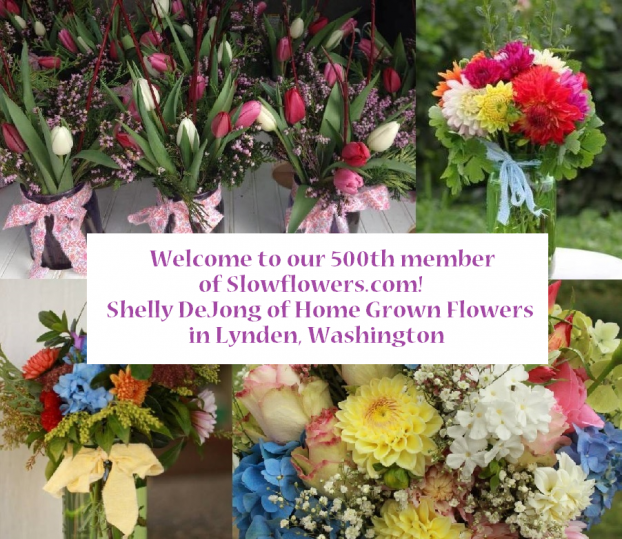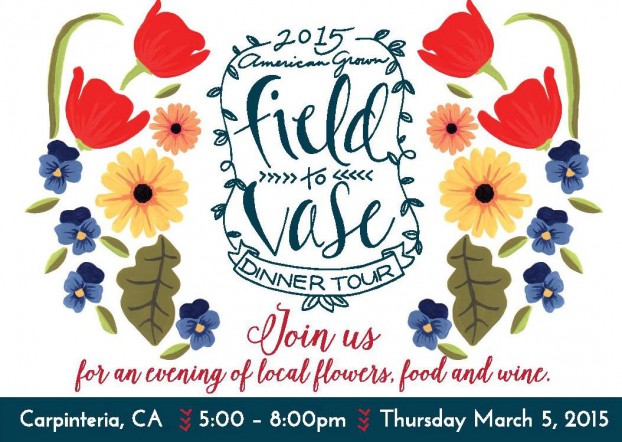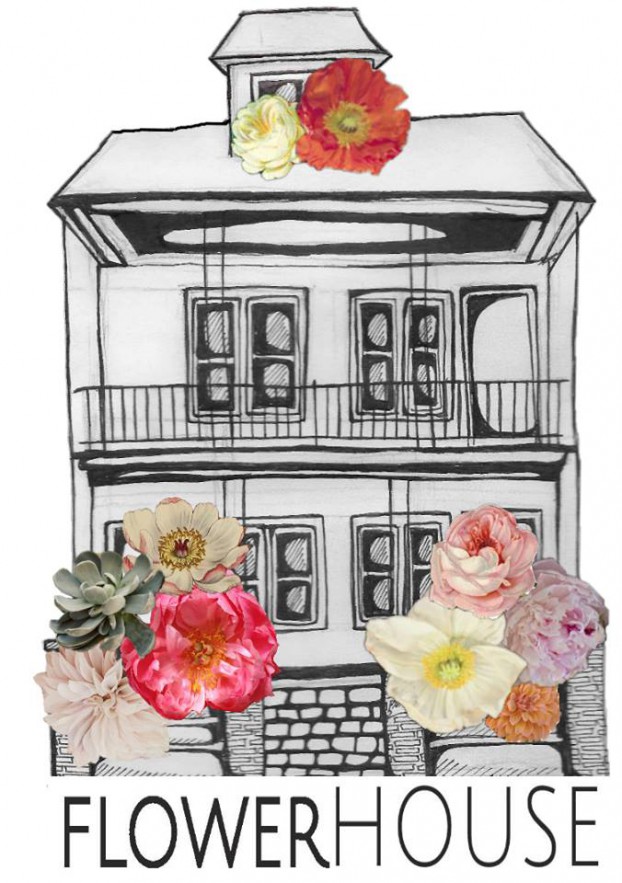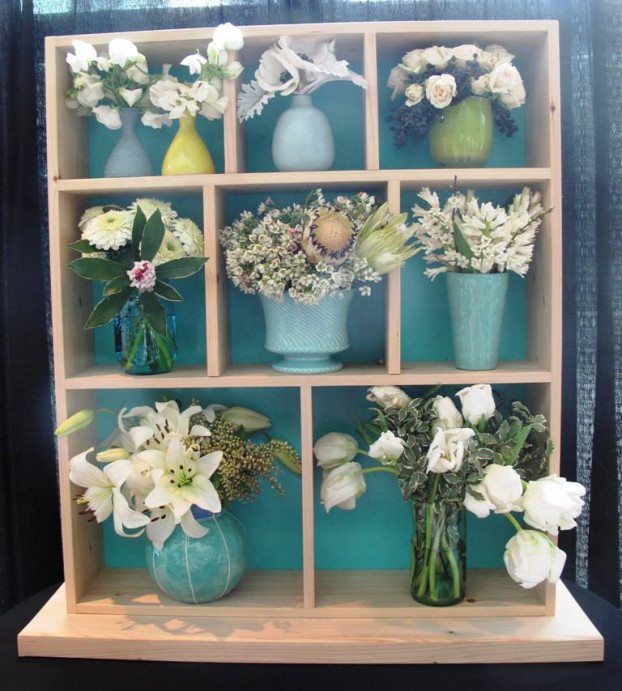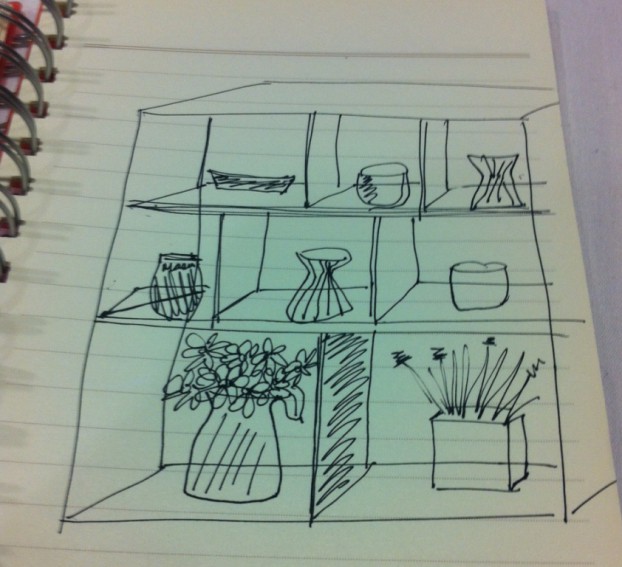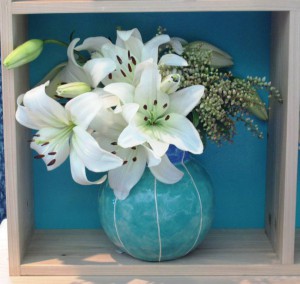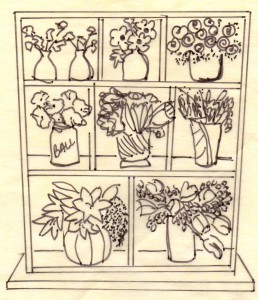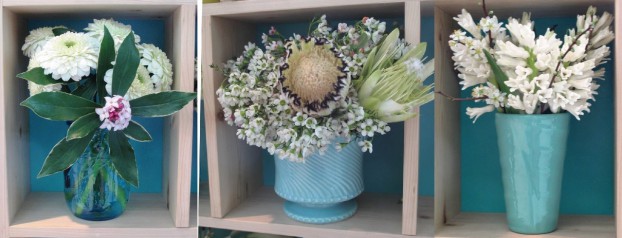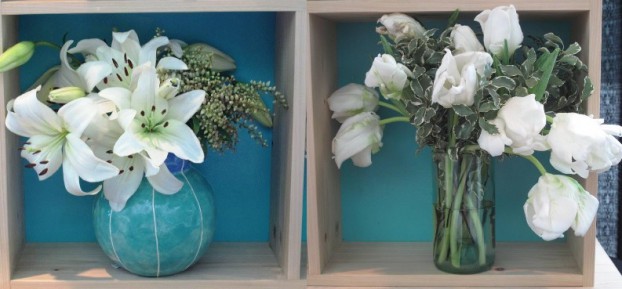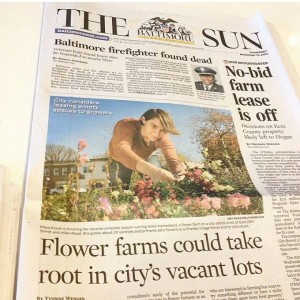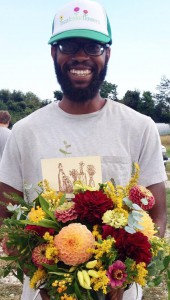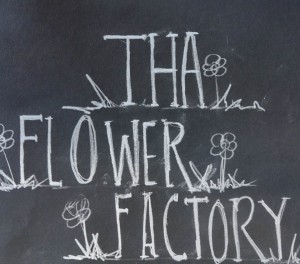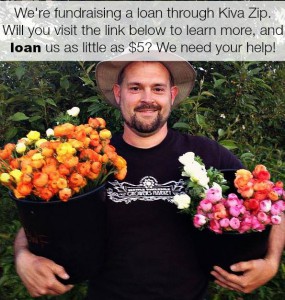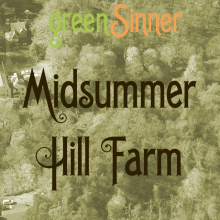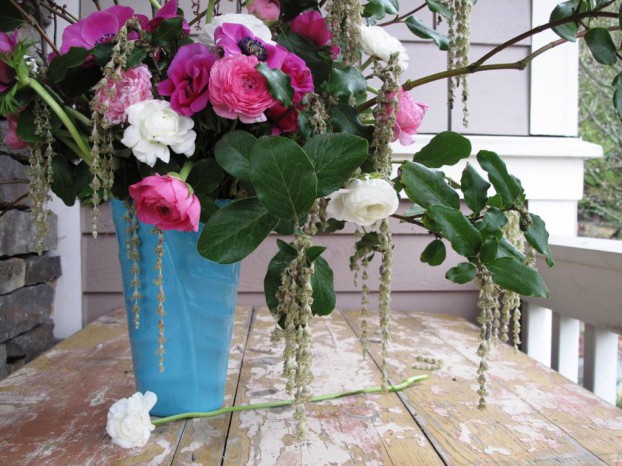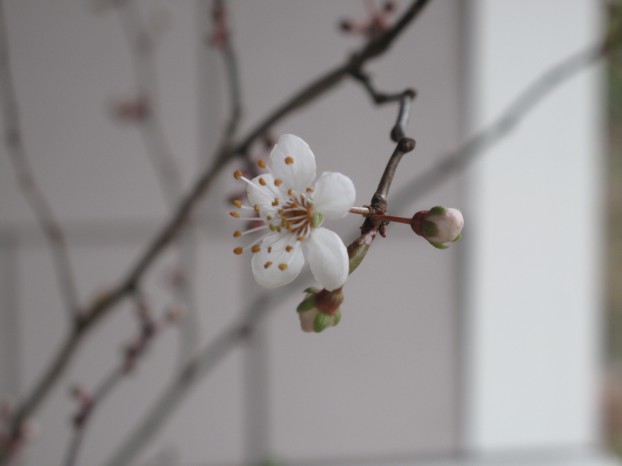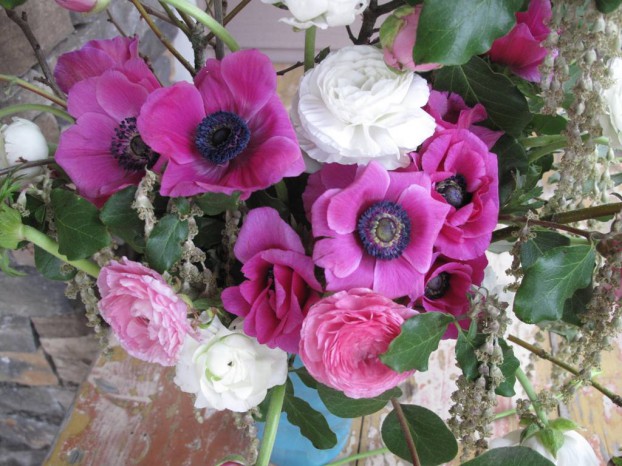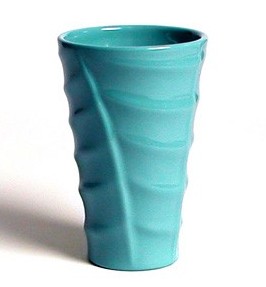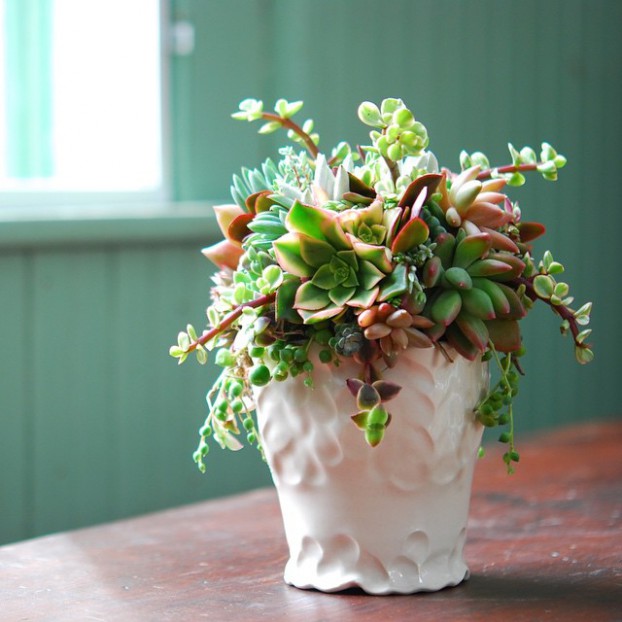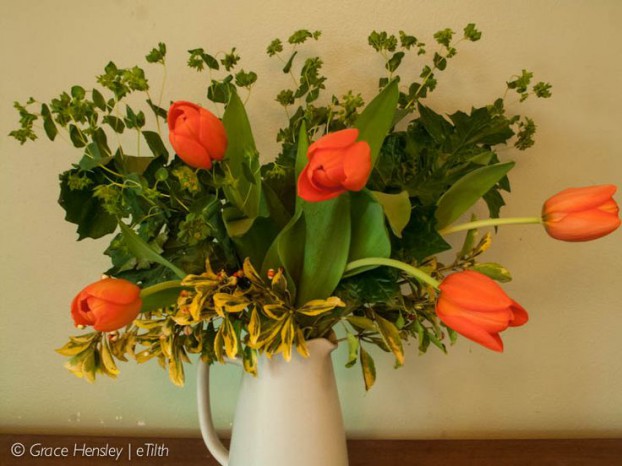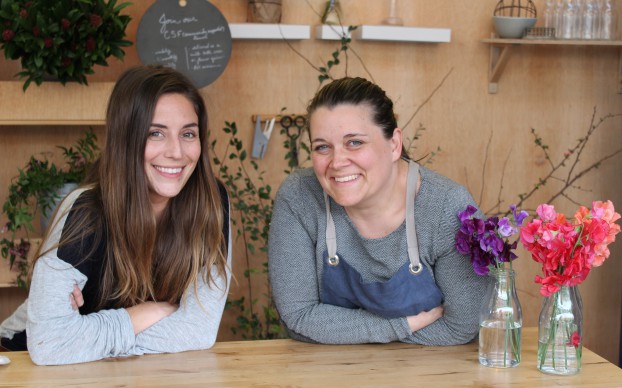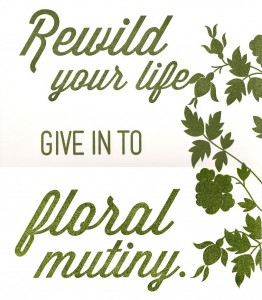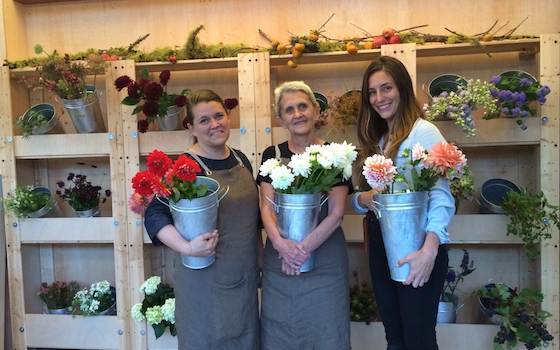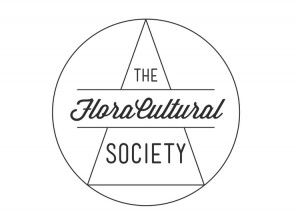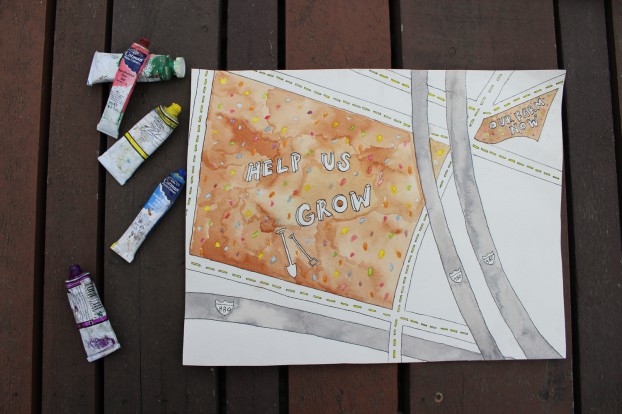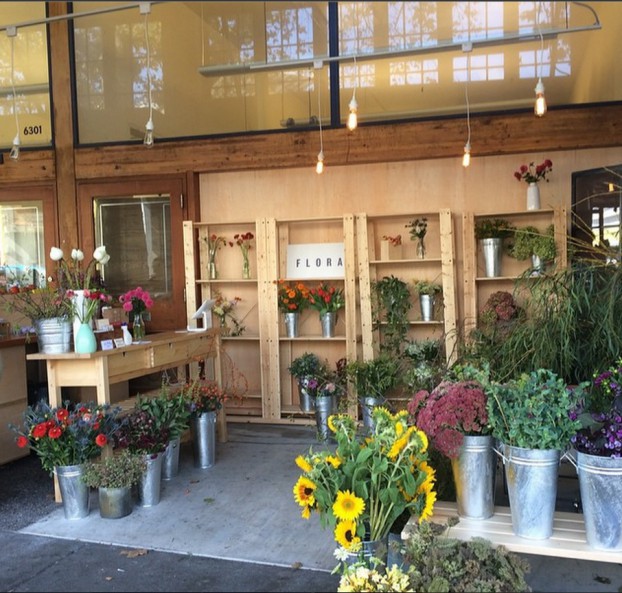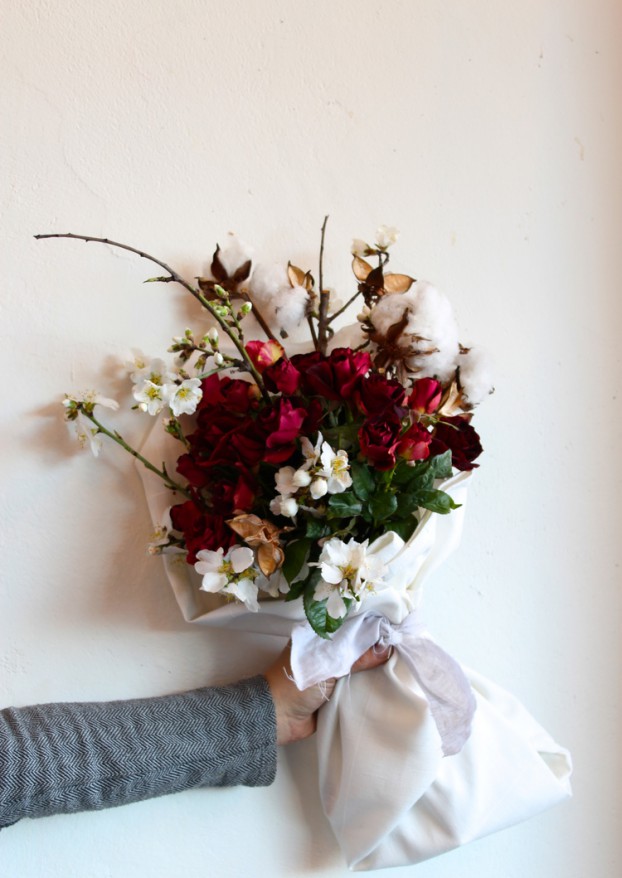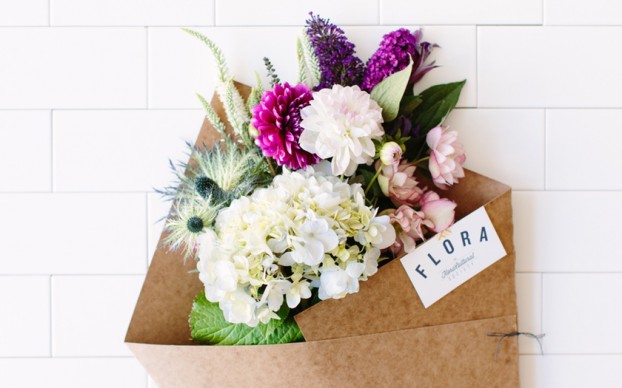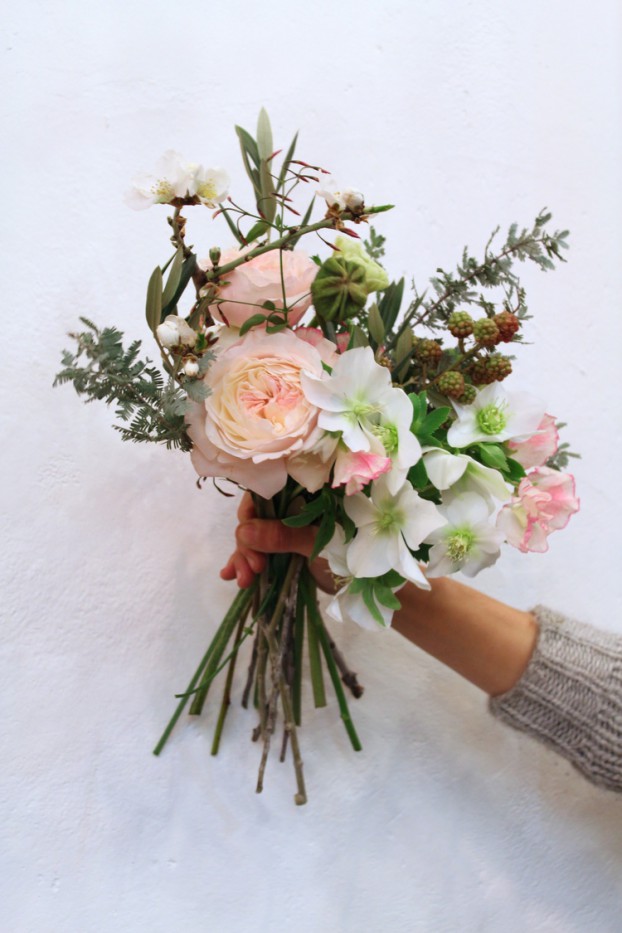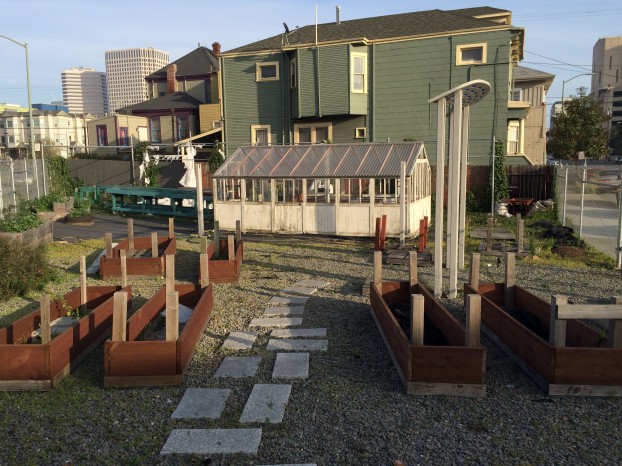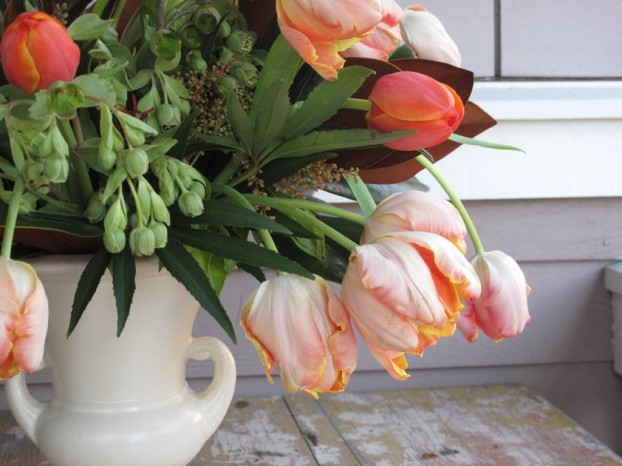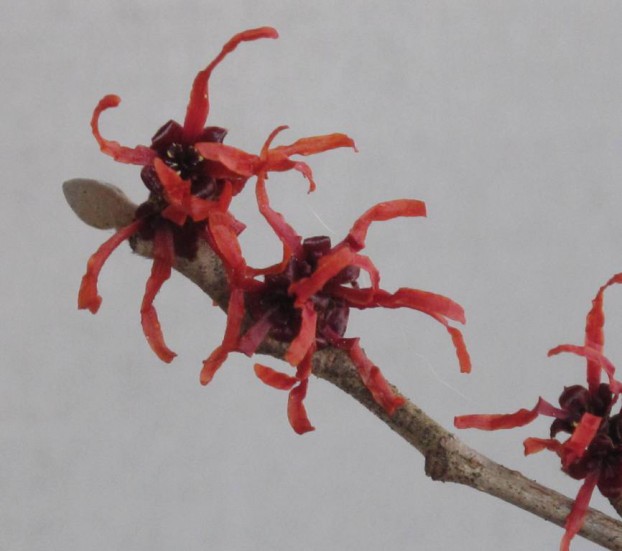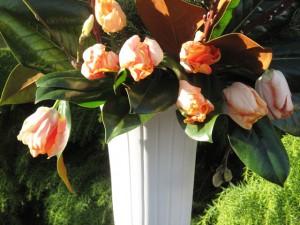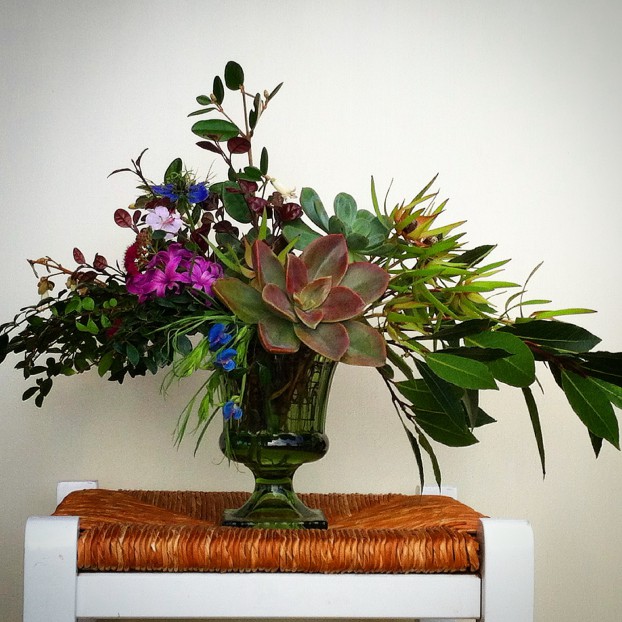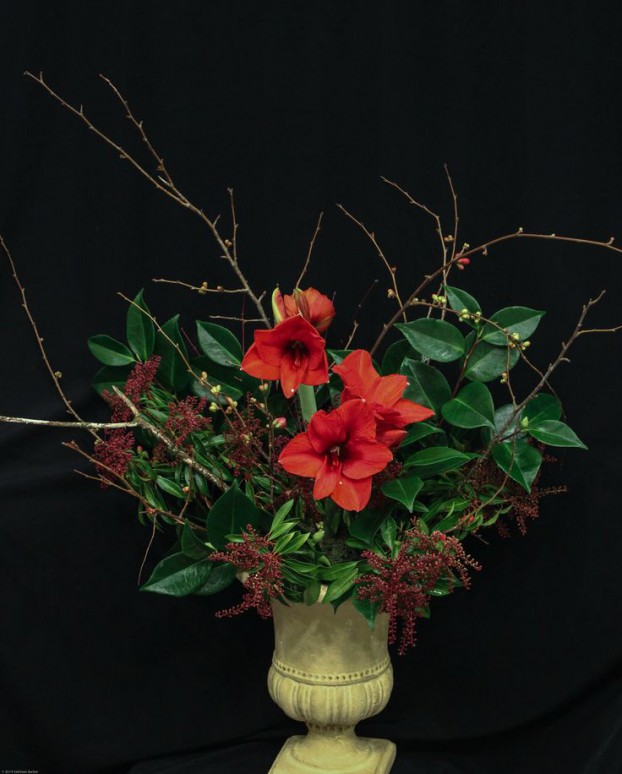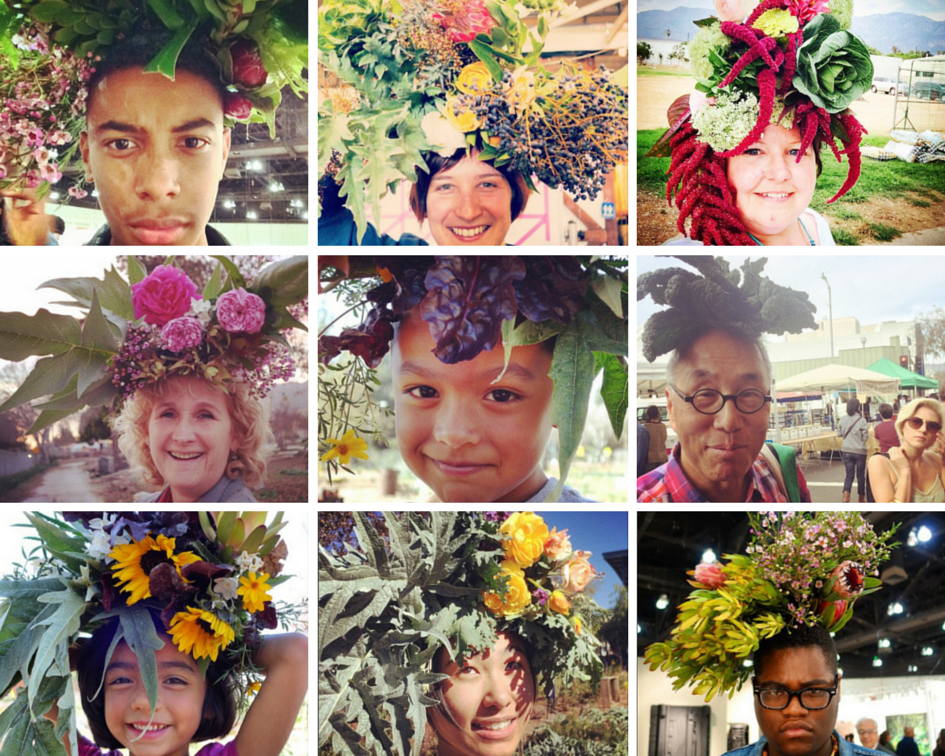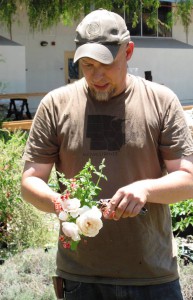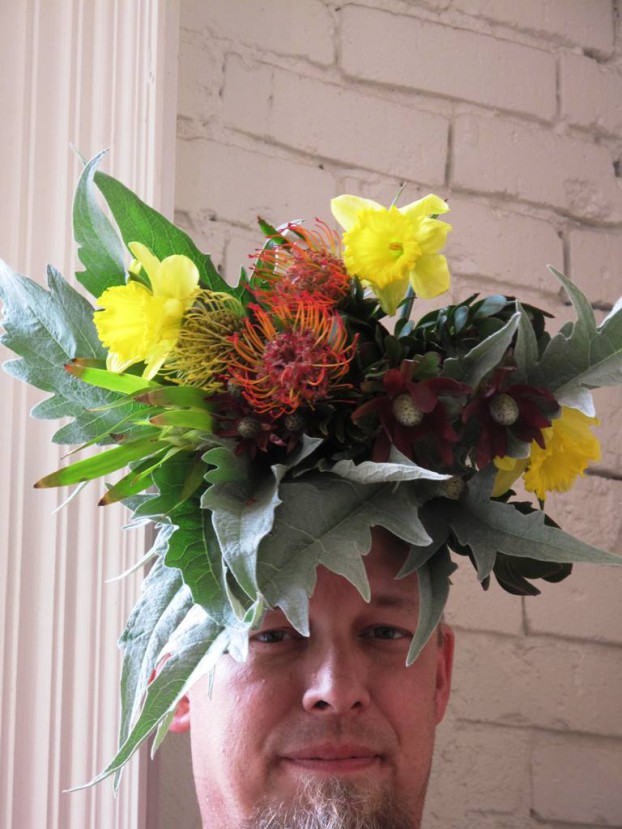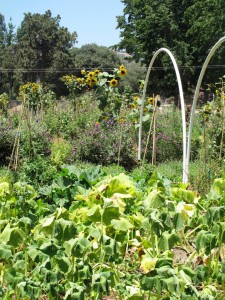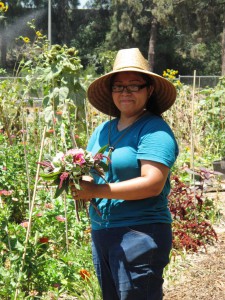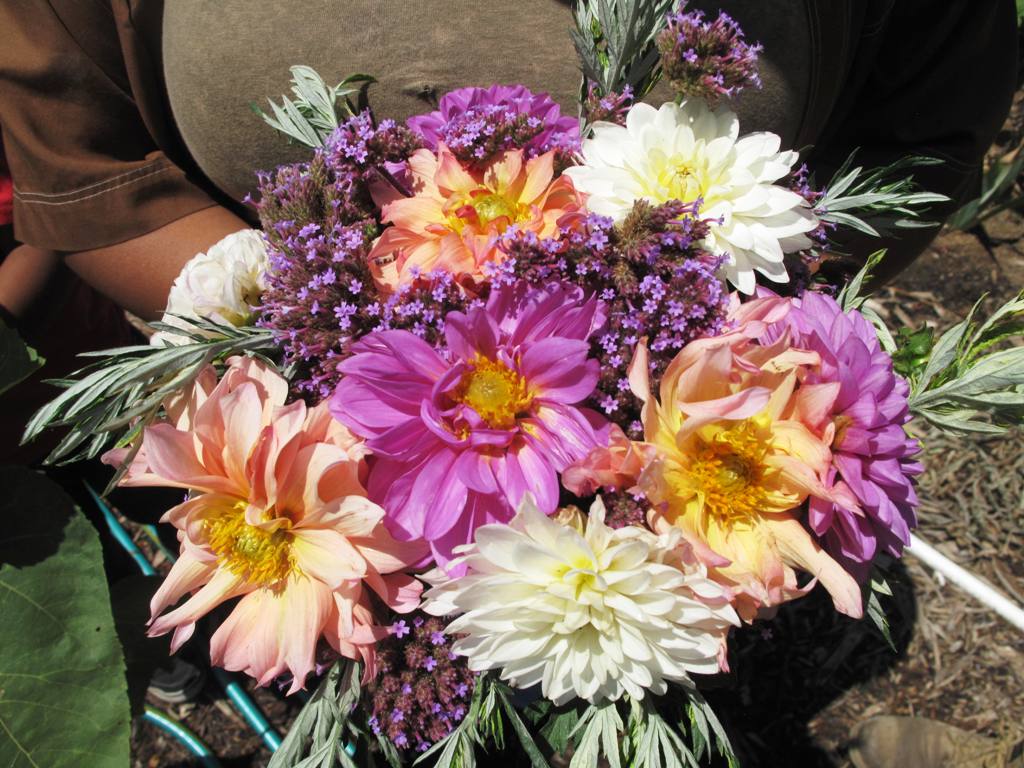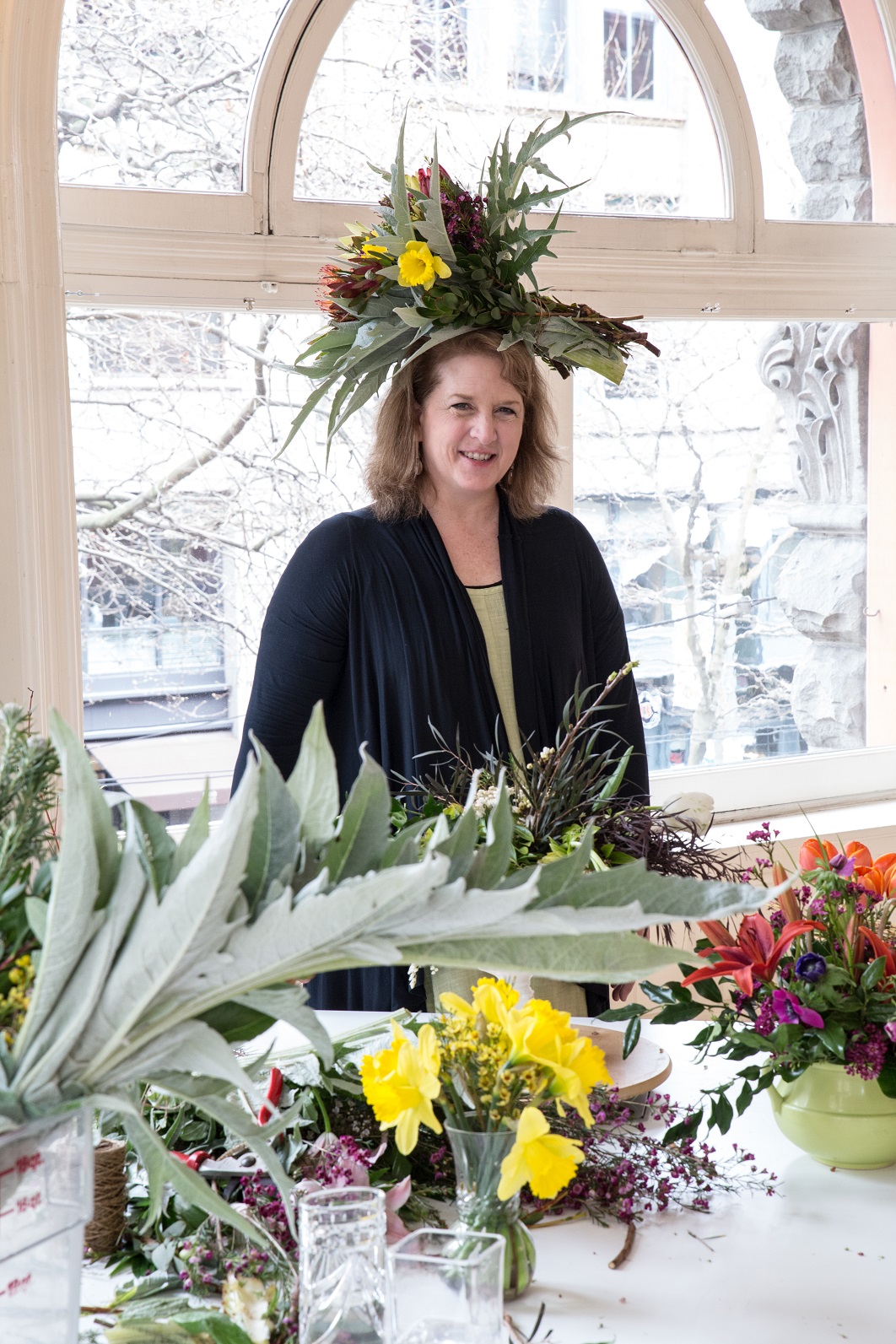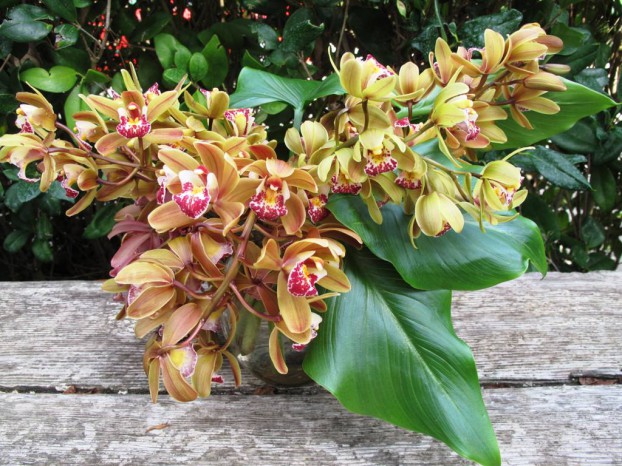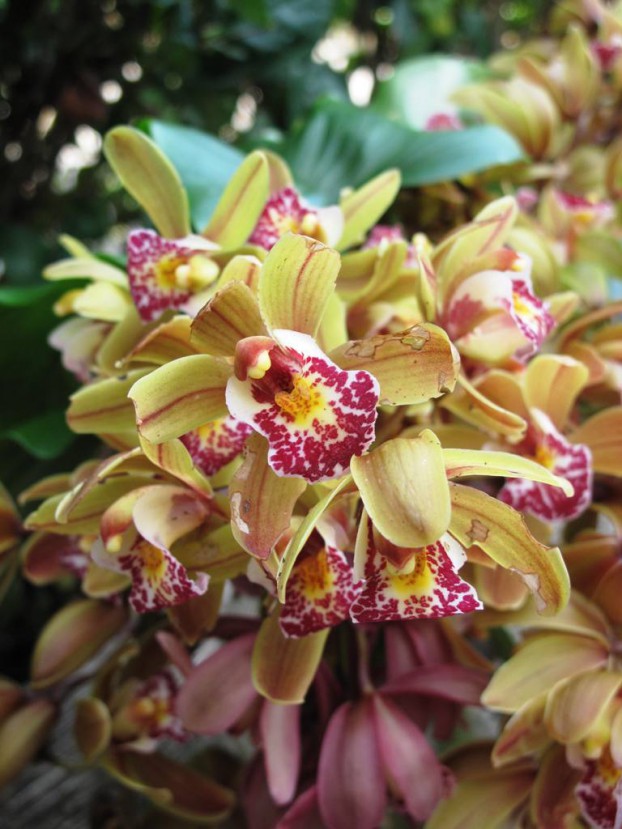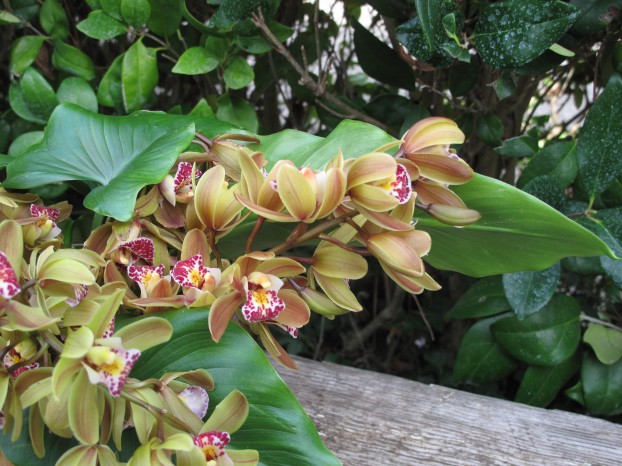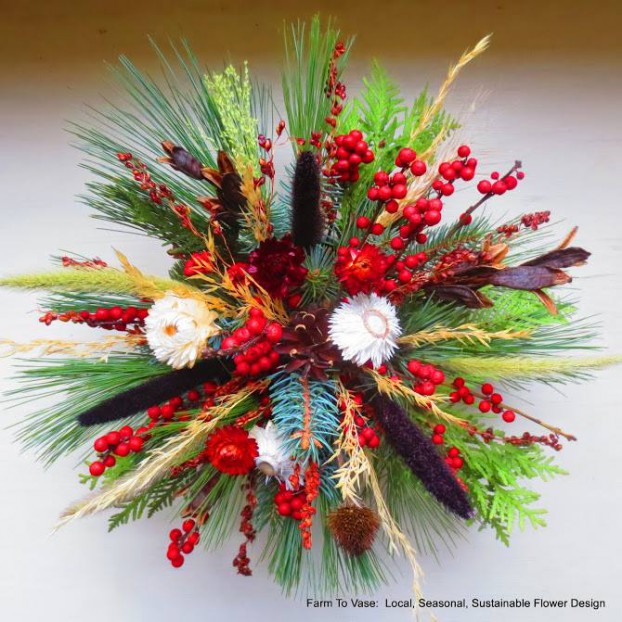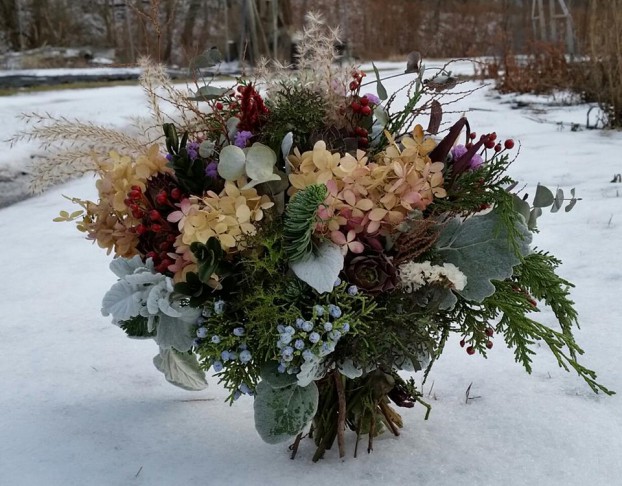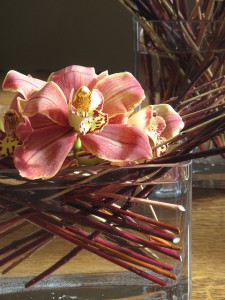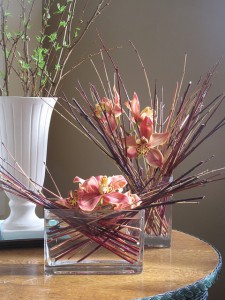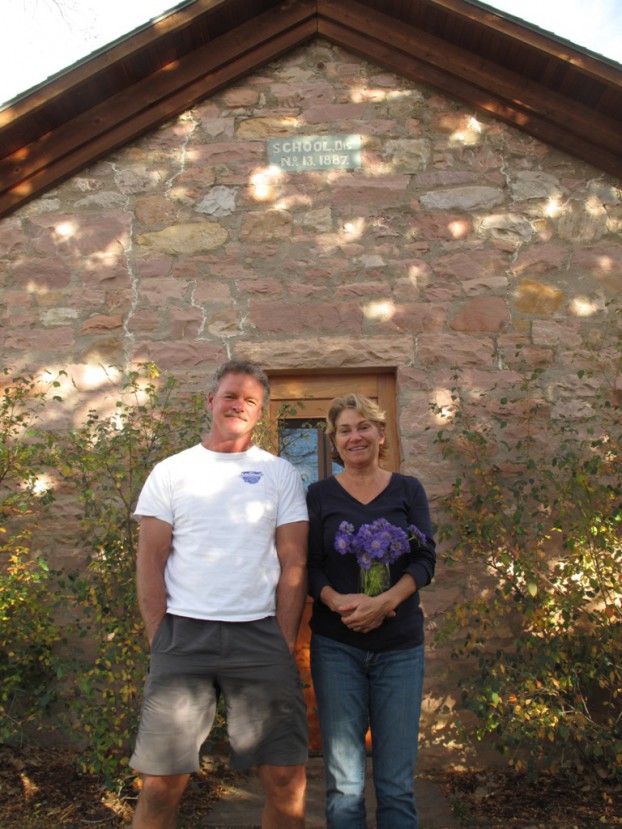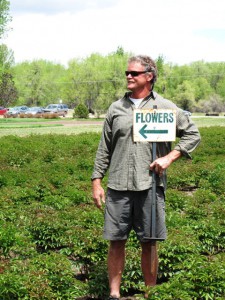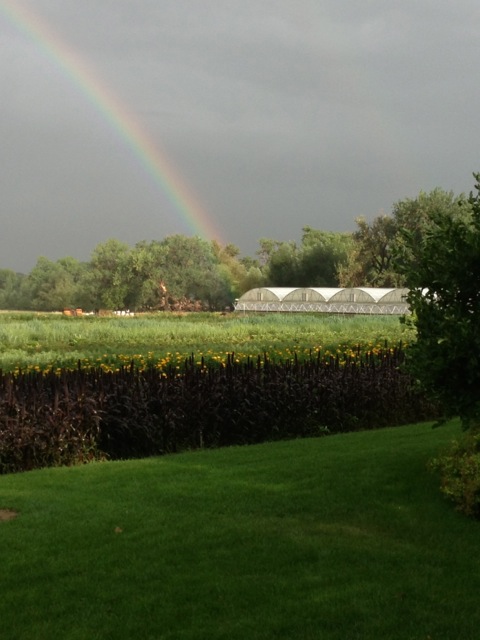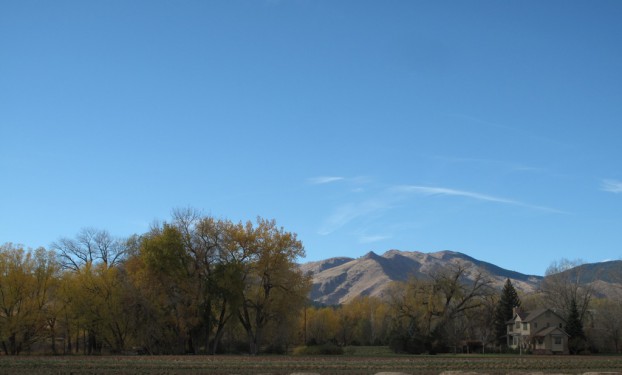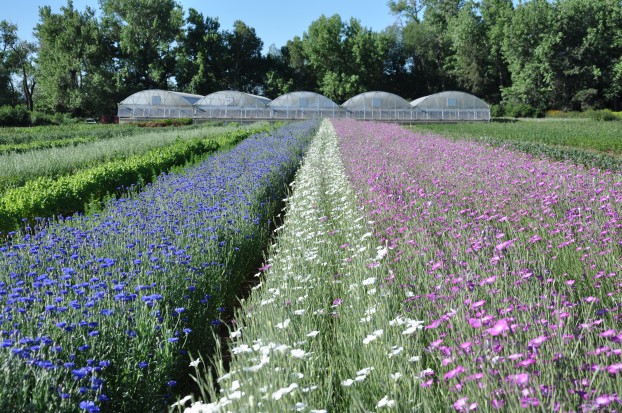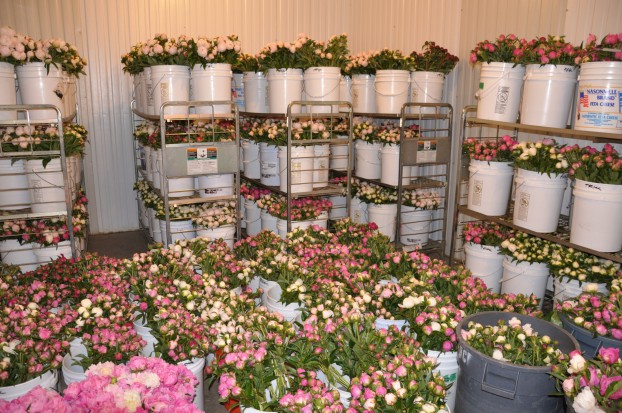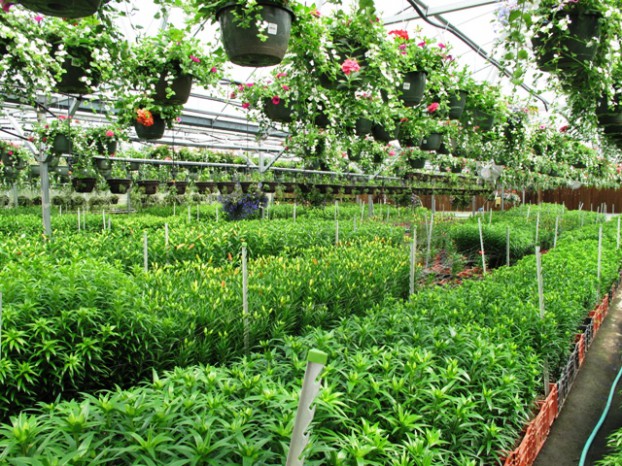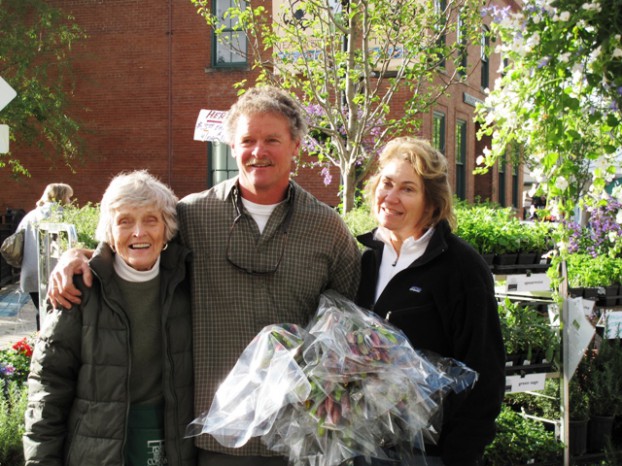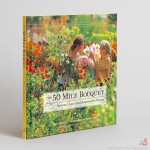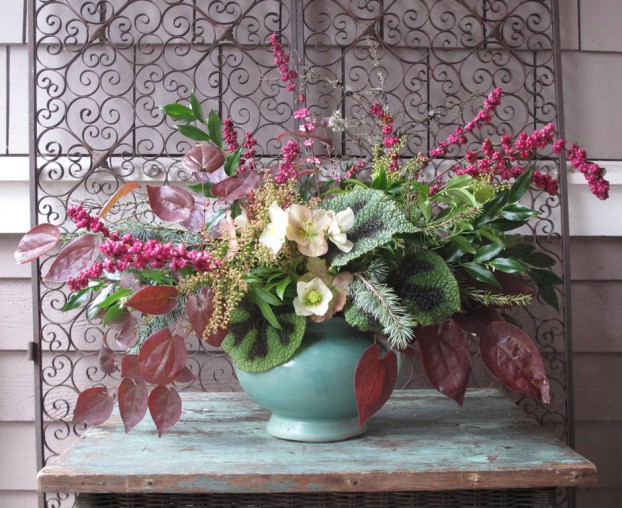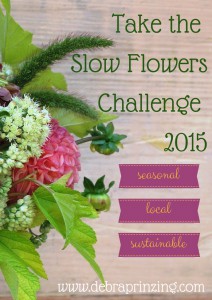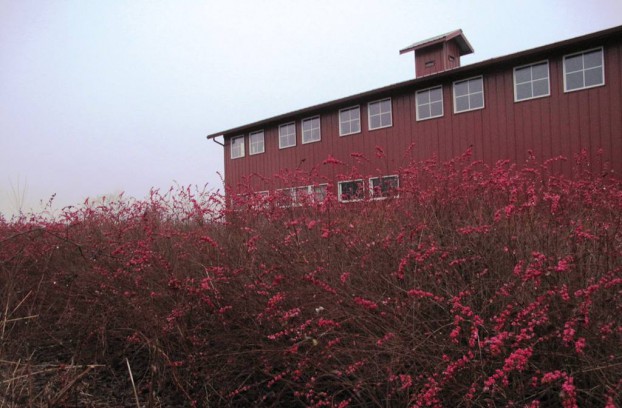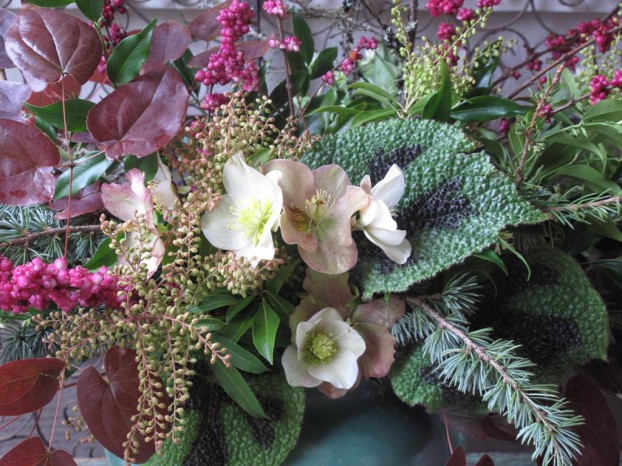Podcast: Play in new window | Download
Subscribe: Apple Podcasts | Podcast Index | RSS | More
After the crazy week of Valentine’s Day, I’m shifting my thoughts to springtime, aren’t you? That’s a little easier for me to say here in Seattle, where the thermometers climbed above 60 degrees last week and flowers are popping up everywhere. But someone reminded me today that spring is only 30 days away. Hold on, everyone!
The Slow Flowers Movement and Slowflowers.com attracted major media attention last week – on wire services, television, radio, print and blogs. I am so grateful for the attention that is turning to American flowers, the passionate farmers who grow our favorite varieties and the talented designers who create magic with each local and seasonal stem they choose. Here is a sampling of some of the headlines we saw last week:
“Slow Flowers Movement Pushes Local, U.S.-Grown Cut Flowers” (that story was written by Associated Press agriculture reporter Margery Beck and it literally went viral — appearing in media outlets large and small – from the Los Angeles Times and Chicago Tribune to ABCNews.com). Slowflowers.com member Megan Hird of Farmstead Flowers in Bruning, Nebraska was also featured in this piece.
“Slow Flowers’ Movement Champions Sustainable Blooms,” by Indiana Public Radio’s Sarah Fentem. Slowflowers.com member Harvest Moon Flower Farm of Spencer, Indiana was also featured in this piece.
“About those flowers you’re buying today; Where did they come from? ask Oregon Growers” from Janet Eastman of The Oregonian. Slowflowers.com member Oregon Flowers was also featured in this story.
“Just in Time for Valentine’s Day: Introducing Farm-to-Table’s Pretty, Flowery Cousin,” by Sarah McColl on the sustainability blog TakePark.com which also featured Molly Culver of Molly Oliver Flowers in Brooklyn, a Slowflowers.com member.
Denver Post reporter Elizabeth Hernandez wrote: “Colorado farmers, florists seek renaissance for local flower scene,” featuring Slowflowers.com member Chet Anderson of The Fresh Herb Co.
And Reuters writer P.J. Huffstutter’s piece “Exotic US Blooms Flourish amid roses in Cupid’s bouquet,” featuring the “slow flower” movement, as well as the CCFC and ASCFG.
We can’t even tally the tens of thousands of impressions that came from this great media coverage – but suffice it to say that, according to Kasey Cronquist, CEO/Ambassador of the CCFC, “In my tenure at the Commission, I can confidently say that this past week of media attention and interest was greater than all of the my other years of doing interviews and monitoring Valentine’s Day coverage.”
He went on to say: “I can also quickly point to the three things that made the difference this year.
- Debra Prinzing’s SlowFlowers.com
- Launch of Certified American Grown
- Increasing Awareness of Caring Consumers, Designers and Buyers”
On top of all of that excitement, I want to celebrate a major milestone! This week marks the addition of the 500th member to the Slowflowers.com web site. Please welcome Shelly DeJong of Home Grown Flowers in Lynden, Washington. Shelly’s tagline is “Flowers as fresh and local as possible,” and she specializes in ball-jar bouquets delivered to customers in her community, throughout the year and for special occasions. Welcome to Slowflowers.com, Shelly!
We can already feel that 2015 might be THE year when the story of American grown flowers hits an important inflection point. As we witness a critical shift in consumer mindset at the cash register, I believe we’ll also see a change — in a good way — in the behavior of wholesalers and retailers who make those important flower sourcing decisions.
One of the things I’m most excited about this year is a series of flower farm dinners that celebrate American grown flowers, as well as the farms and florists who bring them to life. To hear more about this cool project, called the Field to Vase Dinner Tour, I’ve asked special events manager Kathleen Williford to share details.
As I mentioned, you are invited to take part as a guest at one or more of the flower farm venues. The promo code for a $25 discount is DREAM, so be sure to use it when you order your seat at the flower-laden table.
Speaking of being flower-laden, our featured guest today has flowers on her brain in a big way. I am so pleased to introduce you to Lisa Waud of Pot and Box, a flower shop and floral and event studio with two Michigan locations – in Detroit and Ann Arbor. Lisa is a member of Slowflowers.com, but I think we originally met when Jill Rizzo of SF’s Studio Choo suggested to Lisa to reach out and tell me about her ambitious project called The Flower House.
Here’s the scoop:
Beginning over the first weekend of MAY, Lisa will host a preview event for an innovative art installation in Detroit.
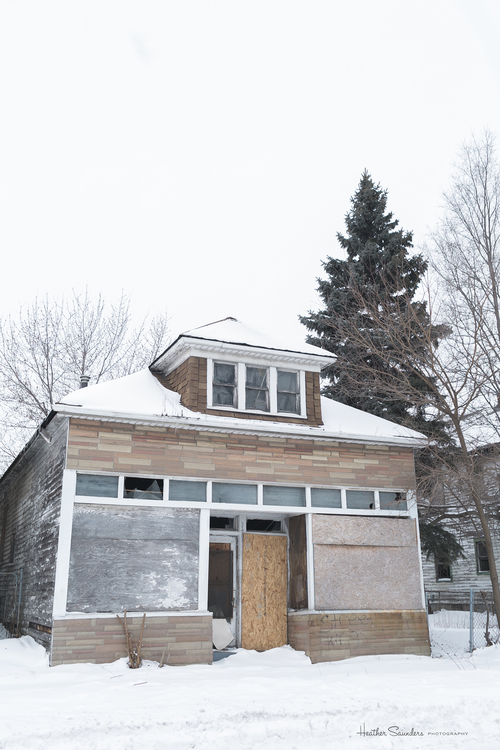
Imagine this abandoned storefront – filled with Lisa’s floral dreams. (c) Heather Saunders Photography
There, potential sponsors, partners, friends and volunteers will get a whiff of the “big project” on a smaller scale. In a tiny storefront, they will install a breathtaking floral display, just next door to a once-abandoned urban property where Lisa and fellow designers ultimately hope to transform an aging, 11-room duplex into The Flower House.
“We’ll generally work our future audience into a flower frenzy,” Lisa says of the kickoff event.
When October 16th-18th rolls around, cutting-edge florists from Michigan and across the country will fill the walls and ceilings of an abandoned Detroit house with American-grown fresh flowers and living plants for a weekend installation.
The project will be featured in local, national, and worldwide media for innovation in floral design and repurposing forgotten structures in the city of Detroit.
Visitors will be welcomed to an opening reception and a weekend of exploration, and a few reserved times will be offered to couples to hold their wedding ceremonies in The Flower House.
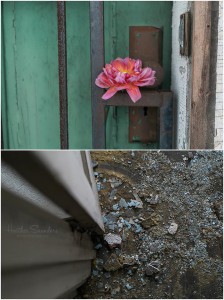
Re-flowering an abandoned home in Detroit – a glimpse of Lisa Waud’s grand idea (c) Heather Saunders Photography.
When the installation weekend has passed, the structures on The Flower House property will be responsibly deconstructed and their materials repurposed. The land will be converted into a flower farm and design education center on a formerly neglected property.
For more details on The Flower House, follow these links:
The Flower House Inspiration on Pinterest
I feel like I’m saying this week after week, but today’s conversations, with Kathleen and Lisa, are so truly encouraging.
This IS the Year of the American Grown Flower. Please join efforts like the Field to Vase Dinner Tour and Detroit’s The Flower House to get in on the excitement. Both projects are community focused, with the potential for engaging huge numbers of people.
By exposing lovers of local food and floral design to the immense creativity that comes from sourcing our flowers locally, in season and from American farms, we are deepening the conversation, connecting people with their flowers in a visceral way. All the senses are stimulated, as well as our imaginations.
Thank you for downloading and listening to the Slow Flowers Podcast! Each week I share with you our “download” count and we have hit 35,000 downloads to date. I’m encouraged to know more people are learning about the farmers and florists who keeping American-grown flowers flourishing.
So I thank you!!! If you like what you hear, please consider logging onto Itunes and posting a listener review.
The Slow Flowers Podcast is engineered and edited by Andrew Wheatley and Hannah Holtgeerts. Learn more about their work at shellandtree.com









